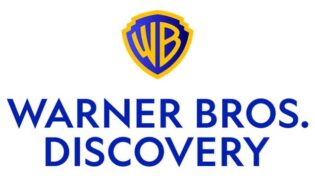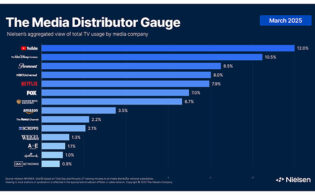Ahead of the official arrival of Max in Southeast Asia, Taiwan and Hong Kong, Warner Bros. Discovery’s JB Perrette and James Gibbons talk to World Screen about the platform’s positioning in the region, the importance of partnerships and the plans for local content.
Max finally arrives in Asia November 19 with launches in Indonesia, Malaysia, the Philippines, Singapore, Thailand, Taiwan and Hong Kong. The regional rollout expands Max’s global footprint to more than 72 markets.
“I think back to August 2022 when we first made comments about the general timeline of Max coming to market,” Perrette, CEO and president of global streaming and games at Warner Bros. Discovery, tells World Screen. “We had the target of $1 billion in profitability and 130 million subscribers by 2025, and the ambition of being a top three service in the markets we’re in. It was always the view that it was going to take us about 18 months to re-platform, restructure the organization and shift some strategies as it related to content and investment. Based on our latest earnings release, we are a little ahead of where we thought we’d be. The APAC team has had to be the most patient. We rolled out in the U.S. and LatAm in February, in Europe in May and June and now Asia.”
Perrette stresses that this regional expansion “is a big step forward for the company,” noting, “APAC is a huge market. Max is available today in roughly half of the addressable market as measured by broadband households. A big chunk of the broadband households we are not available in are in Asia. We’ve got a lot of work still ahead of us, but a lot of opportunity from this incredibly dynamic and exciting region. We’re just getting started.”
Perrette concedes that launching a new service in a crowded market is no easy feat. “There are a lot of established players. The flip side is we’re not in the widgets business. We’re not selling the same thing as everybody else. We have a unique portfolio of IPs. Max is the exclusive home of all the HBO originals; the best of Hollywood with all of the Warner, Universal and Paramount pay-one titles; all the classic popular franchises in the WB library, like Friends, the DC Universe and Harry Potter—brands that are English originated but global and certainly APAC resonant—as well as local content in select markets.”
Perrette adds, “This is a big change. We moved from HBO Max to Max in Europe and Latin America—the product experience got a lot better, the content offering got better, but it’s not as dramatic as the change we’ve gone through in Southeast Asia, Taiwan and Hong Kong. We went from basically an HBO GO product—we were two generations behind in Southeast Asia. You’re going to have a vastly improved content offering, a vastly improved product experience and much greater distribution partnerships, thanks to the work that James and his team have been doing with all our partners. Because we are later to the party, it’s important to work with all of our great partners across the region to try and get the product in the hands of more consumers.”
Existing HBO GO customers will be migrated to Max, which is also being offered through telco and pay-TV partnerships and directly to the consumer. “We’re upgrading the experience for all of the existing customers who are consuming HBO GO, but also extending that reach significantly within the universe of each of our partners,” says Gibbons, the president for APAC at Warner Bros. Discovery. “We will be much more widely available. We are working towards having a full app integration, so the experience that customers will have will be greatly superior. We are also working with partners—SingTel, Telekom Malaysia, AIS, Link Net—to make it easier for a wider customer base to access the product. Regardless of how the customer is used to consuming media, it will be much more convenient and easier for them to be able to make that connection. The DTC pure retail space, via app stores and the web directly, will also be greatly enhanced. We’re taking down all the barriers so our fans can consume the content in one fantastic high-tech destination. It is a total transformation of the experience.”
As Gibbons references, partnerships are key, and bundling will be an area of opportunity for Max in Asia, Perrette explains. “There’s still an oversupply and an over complexity for the consumer in the streaming era, everywhere in the world,” he says. “There are a lot of opportunities in every market to simplify the experience, whether that be through structural—M&A and further consolidation—or commercial bundling. We are a big proponent of that.”
Gibbons adds, “Our movie offering is the strongest in the region by far. If you’re an operator or anyone who’s looking at putting together a package, you’ve got to have Max, otherwise your movie proposition isn’t going to cut it. We believe that we are a strong choice for those bundles. As aggregators—pay-TV companies, telcos and even other streamers—start to put together an offering, our role in the bundle is very clear. When we talk to partners, that’s what they tell us. That sets a great stage for what’s going to come next. The momentum is clear.”
Partnerships will also allow Max to access locally resonant content in key markets—without having to produce everything on its own. “We know the importance of local content,” Perrette says. “This is where there’s an advantage in coming in at this stage of the party as opposed to five or eight years ago. The mentality then was everybody has to do everybody else’s business, which led to the virtual bankruptcy of the industry. There’s not a massively greater demand for more content. We can go out and spend hundreds of millions of dollars in producing more original content in Japan or Thailand or wherever, but we don’t think the consumer’s saying, ‘You know what’s missing? More content.’ They’re saying, ‘Bring it to me in a more seamless way. Don’t make me have to choose. Make it easier and more affordable.’ That’s where we go back to the bundle conversation. A lot of the industry has seen how hard it is to do everybody else’s business. We see that opportunity with local players who are fantastic at producing local content and who are going to struggle over the long term to stay independent and go it alone because of the cost of the technology, the platform and the marketing—it just gets to be too much. There’s a ripe opportunity for players to work together in a smart way.”
Gibbons notes that WBD will continue producing local content in Asia in some of its key verticals. “We have an anime studio in Japan—we’ll be ensuring that those titles start to appear on Max. We are investing in that business going forward because we believe we can tell great stories in that category; There are other Asian content categories that we will be producing directly in. So, through bundling and producing in key categories, we will be continuing to increase the relevance of the proposition.”
Pricing will be market-specific, with the focus being on ad-free subscription propositions. Ad tiers are key for the company, Perrette noted, but it’s still early days in Asia. “Up until this year, we had an ad-supported tier in only one market: the U.S. We’re now in over 45 markets, including LatAm and a handful of European countries. The ad tier has taken off in a big way in 2024. The reality is it’s going to be a build over time in a lot of these international markets because, in some cases, premium digital video as an inventory type is fairly new. In Latin America, the digital inventory space was more YouTube-like, with lower CPMs. We’re trying to build and create, along with others in the streaming space, a premium video inventory that is priced appropriately. We see that as a big growth driver for us over the next two to three years, but it will take time. We’re ultimately going to make sure we do it in the right way so we get the right premiums. In APAC right now, we don’t see the ad opportunity to drive meaningful ARPU as being as fruitful as it is in other markets, so we’re not rolling it out yet. That’s true for Southeast Asia. In other markets like Australia or, potentially, Japan, that might be different. We’re going to evaluate each one based on the market dynamics. But for Southeast Asia, we didn’t see the opportunity. What we do see in the Philippines and Indonesia is a lot of mobile-only consumption. That’s why we tailored a mobile SKU for those two markets to see if we could attract the more price-sensitive but mobile-only consumer. it will be the first of its kind for Max anywhere in the world.”






